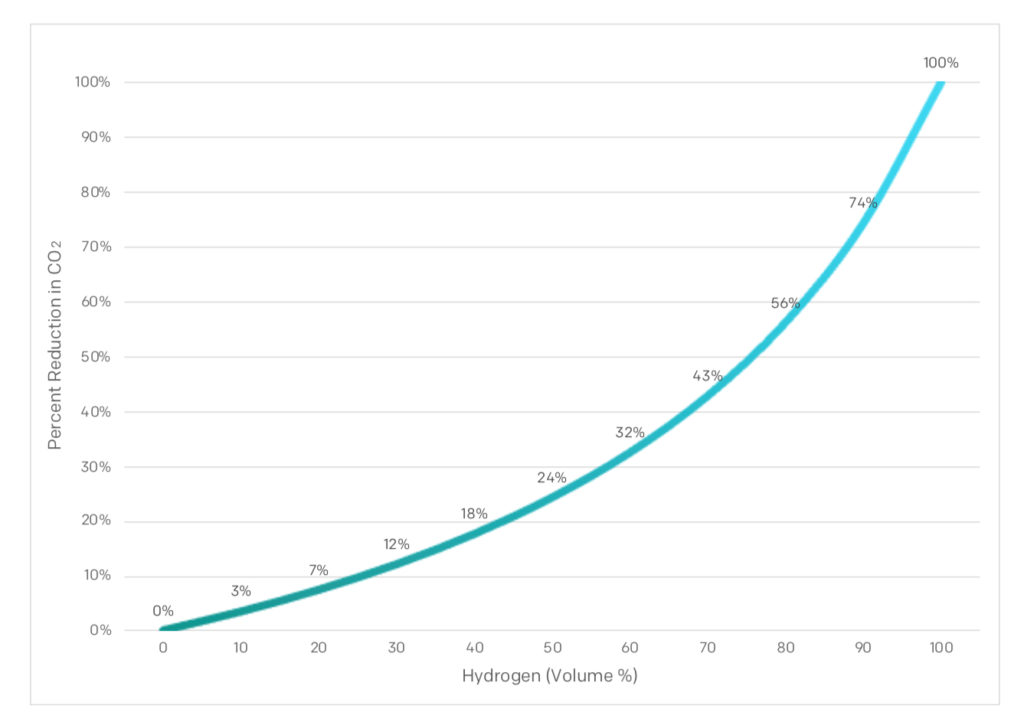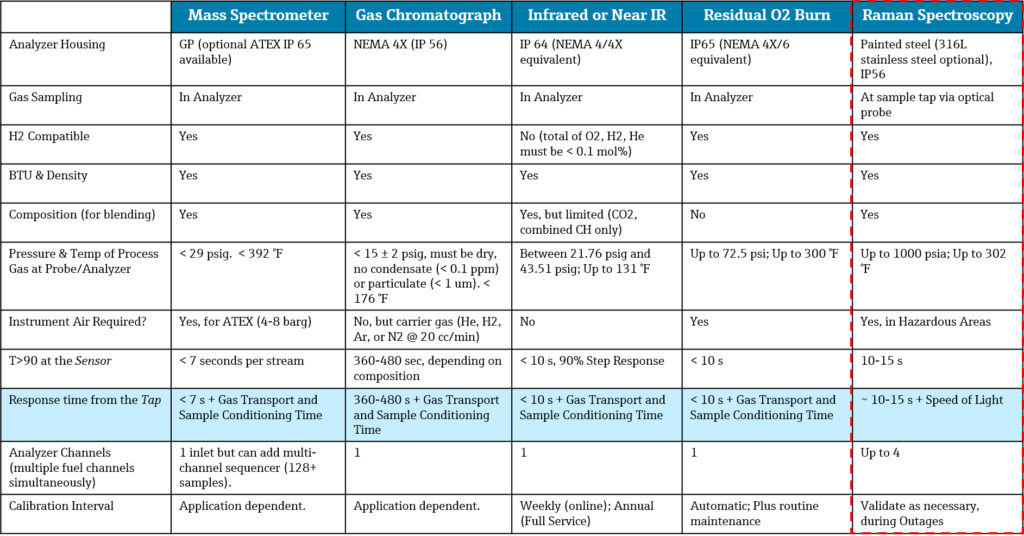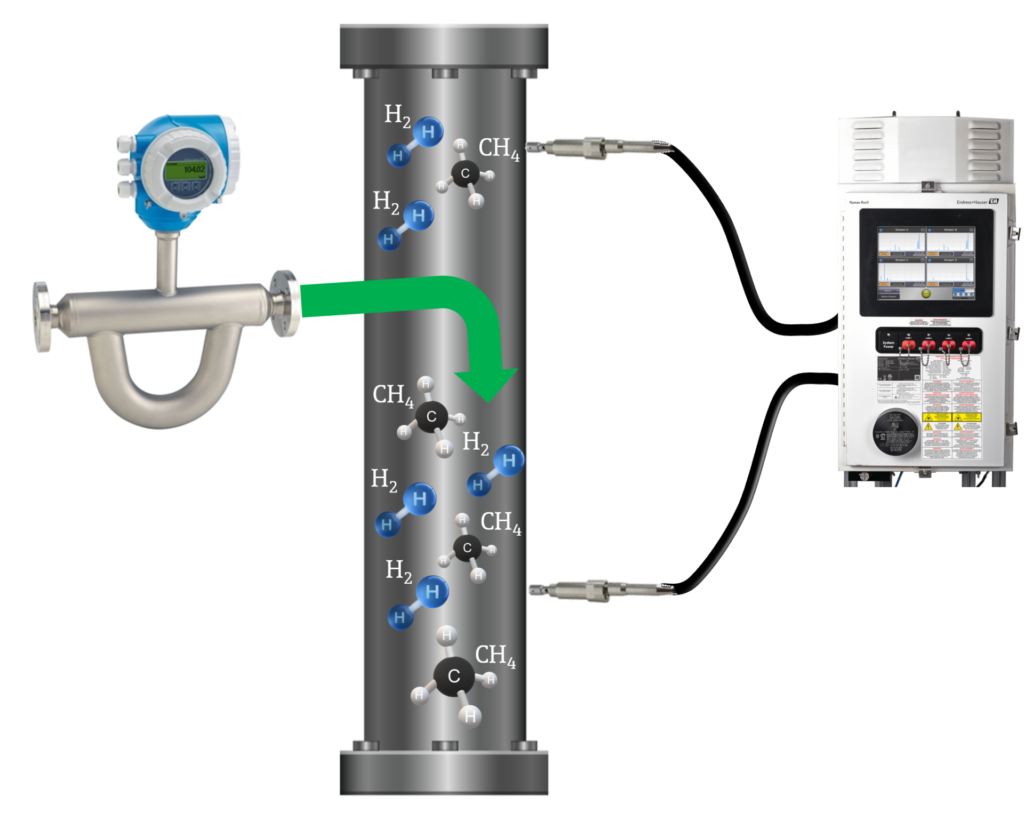Breaking down instrument calibration and verification
Instruments are vital in process environments because their measurements directly impact product quality and operational safety. However, even the most […]
Renewable electricity sources are quickly on the rise to mitigate climate change. While wind and solar electricity sources often come to mind, green hydrogen—where excess electricity is channeled through a mechanism breaking water into its component hydrogen and oxygen through electrolysis—provides flexible options for electricity storage and later use.
As the world looks for ways to use less carbon, green hydrogen is growing in importance as an alternative energy source because:
Natural gas producers, pipelines, and industrial consumers have a variety of reasons to understand gas composition, including the amount of hydrogen blended in, and generating this information requires the right type of analyzer.

There are five primary technologies for analyzing natural gas compositions
Mass spectrometers provide fast response and exhibit high accuracy, but they are not typically supplied in enclosures ready for mounting in plant environments, instead requiring expensive system integration and complex sample conditioning systems to prepare process media for analysis.
Gas chromatographs are widely used, but analysis of process media with high hydrogen content requires a special design, using argon as the carrier gas instead of helium. Additionally, gas chromatographs provide slow response times of about four to six minutes for each sample stream, particularly problematic where safety and performance considerations rely on quick feedback from a gas stream.
Infrared and near-infrared analyzers are useful for measuring many gaseous components, but they are not well suited for hydrogen blending applications due to their inability to specify and quantify hydrogen with the necessary speed and accuracy.
Residual O2 burn can reliably measure Btu, but it cannot accurately identify hydrogen and provide true compositional measurements.

Raman spectroscopy is a more recent measurement technique adapted for industrial applications. It uses laser radiation to produce light in the visible or near infrared wavelength regions to excite the vibrational modes of different gases in a sample, and the resulting scattered radiation changes color based on the sample’s chemistry. A Raman analyzer measures these scattered colors to identify components of the gas, and the intensity of each color to determine concentrations, creating a chemical profile of the sample.
When this concept is applied to an industrialized analyzer, it uses a probe inserted into the gas stream to direct gas flow through a passage. Perpendicular to the gas passage is a miniature optical system, with green laser light shining through a lens across the passage, where it strikes a reflector and returns across the passage. It then enters a detector, where the resulting individual wavelengths are identified and quantified by the analyzer.
This approach has several critical advantages over the previously discussed technologies:
Compositional measurements with Raman spectroscopy can be used to derive Wobbe Index or calorific value, according to ISO and GPA Midstream Association standards such as GPA2172-09/GPA2145-2009, GPA2172-09/GPA2145-2016, and ISO6976-1995E, ISO6976-2016.

For facilities producing green hydrogen, natural gas blending is often the most practical way to capture its value. With fiber optic lengths up to 500 feet, Endress+Hauser’s Rxn5 with multiple probes can monitor hydrogen composition over long lengths of pipeline post injection.
The entire injection process can be automated and packaged as a single skid, sized to reflect the incoming hydrogen supply and corresponding hydrogen signal. Built around a Raman analyzer, the skid’s automation and instrumentation system can determine the maximum injection flow to offload the greatest amount of hydrogen, or to optimize the mix to match the requirements of a gas turbine or other combustion process.
A fully assembled and tested skid built with carefully selected components is often the best solution to get processes up and running quickly, with minimal maintenance required while in operation. When combining Raman spectroscopy with a comprehensive control strategy, companies can use their surplus generating capacity to create green hydrogen, so pipeline and turbine operators can operate safely on higher blends of hydrogen in natural gas and reduce overall carbon emissions.
To learn more about getting a hydrogen signal in natural gas, read our white paper!
Instruments are vital in process environments because their measurements directly impact product quality and operational safety. However, even the most […]
Technology you can trust in hazardous areas, critical applications and highly regulated industries The process control industries are characterized by […]
Ensure you are getting the most out of your instrument’s capabilities by talking with one of our technical support services […]